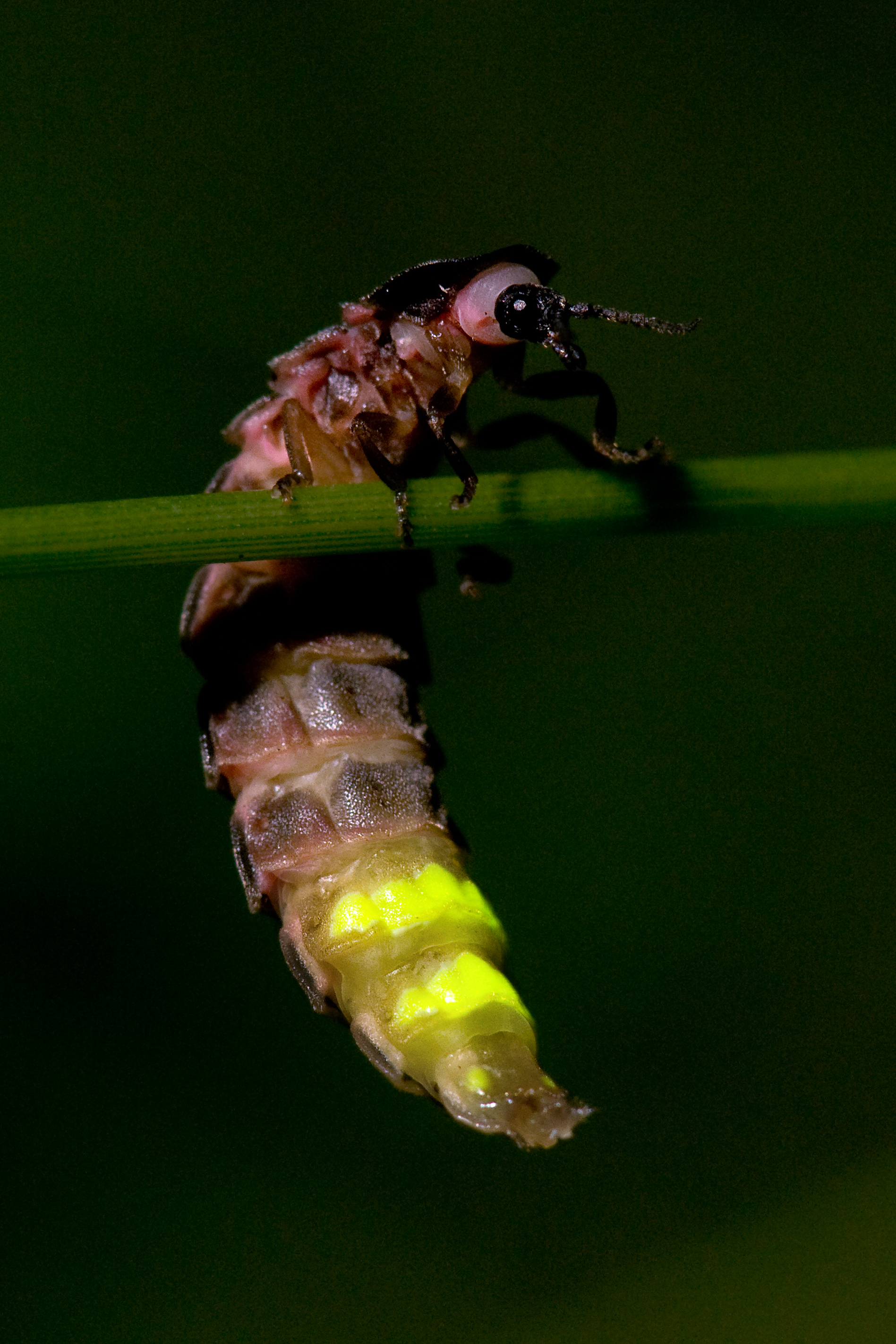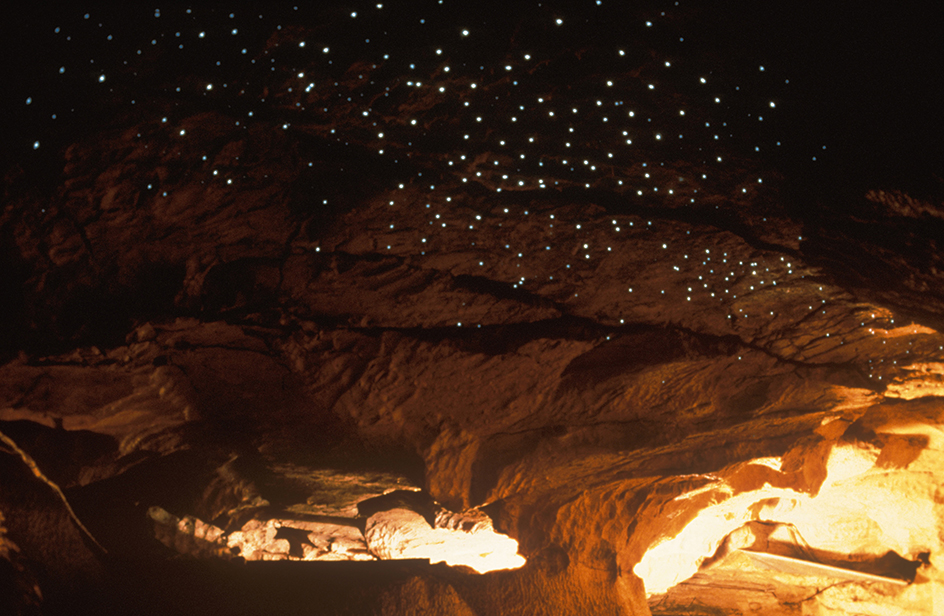Glowworm is a small kind of fly native to Australia and New Zealand that glows to attract food. Although glowworms resemble worms, they are actually the larvae (young) of several species of gnat that make up the genus (group) Arachnocampa. Scientists also use the word glowworm to describe a family of American beetles. In addition, people sometimes use the word glowworm to refer to another kind of beetle called the firefly. The remainder of this article deals with Arachnocampa larvae. For information on fireflies, see Firefly.


Glowworms can reach up to 1.2 to 1.6 inches (3 to 4 centimeters) in length. They live in moist overhangs or caves near water.
Glowworms produce a blue-green light through chemical processes, an ability known as bioluminescence (see Bioluminescence). The glow originates at the rear of the insect and is projected out of the body by a reflective organ. Glowworms use the light to attract the small insects they eat. They attach themselves to an overhanging surface and drop snares of fine silk thread covered in sticky mucous. The snares capture insects much as a spider’s web does. When an insect becomes trapped, the glowworm hauls it up and eats it with powerful jaws.
After around 6 to 12 months, a glowworm enters a relatively inactive stage called the pupa. It emerges a week or two later as a small adult fly about 0.4 to 0.6 (1 to 1.5 centimeters) long. The adults cannot feed and live only a few days. An adult female lays around 130 eggs, which will hatch into more glowworms.
Large colonies of glowworms produce striking displays, resembling a galaxy of stars. Such spectacles have attracted many tourists in Australia and New Zealand.
